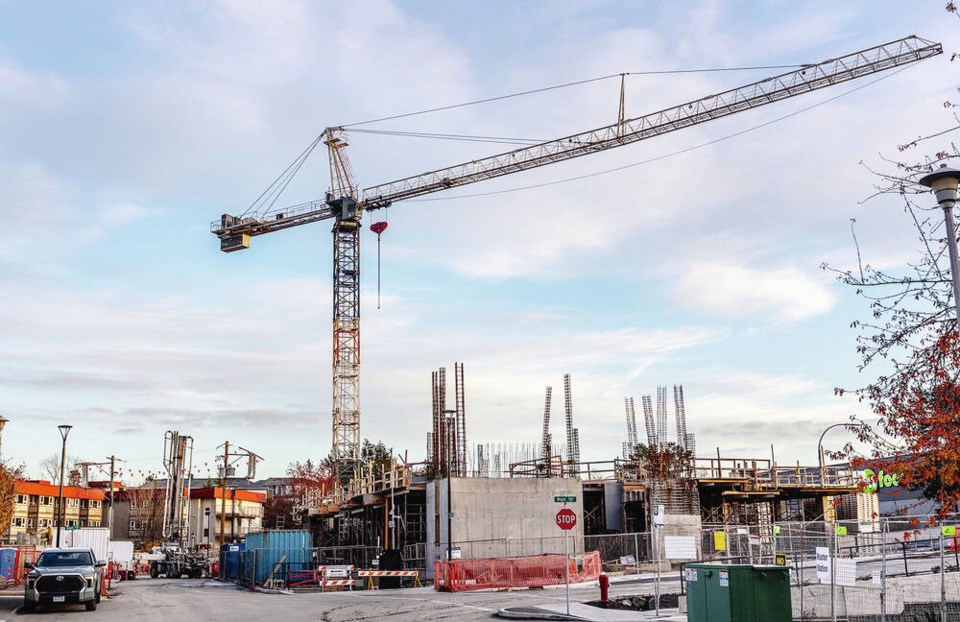Saanich council approved a development permit this week for a six-storey affordable housing development in the Nigel Valley neighbourhood.
It’s the kind of project the mayor of Saanich believes strikes a blow for affordability in an expensive municipality and sets the district on course to reaching its housing targets.
Dean Murdock said the 110-unit project, being driven by B.C. Housing, means new affordable homes in Saanich that can be completed relatively quickly.
“We can actually get them delivered in a pretty short amount of time,” he said, noting the technical requirements have more or less already been met. “The other component is that it’s in a highly desirable area. It is in such close proximity to shopping and services and major transportation — this is going to be a big help for people who move into this neighbourhood.”
The project is the third of eight buildings envisioned in the master plan for the Nigel Valley redevelopment. That project, to be completed over 10 years, is a $250-million housing redevelopment that will eventually provide 800 new homes in the Nigel Valley.
The project, sandwiched between Darwin Avenue and the Patricia Bay Highway south of Saanich Municipal Hall, includes about 440 below-market-price rental homes and 255 units of market housing.
“When it’s finished, it will be a fully built out community of affordable and supportive homes for people with a range of needs and a range of incomes to be able to live,” said Murdock.
It also goes a long way to addressing a massive need in Saanich.
The district’s most recent housing progress report, released in the spring, showed that while Saanich for the first time managed to exceed its own housing target in 2023, it fell far short in providing below-market-price housing.
In 2023, Saanich had 725 net new housing units established last year, which eclipsed the target of 610.
But Saanich did not issue a single development permit last year for non-market housing, and issued building permits for only 119 units of non-market housing — the district has a five-year provincial target of seeing 1,161 non-market units completed.
Murdock said things have changed this year and the non-market sector has picked up. He points to the Nigel Valley as a shining example of making a good start.
He noted other projects have cleared council hurdles and construction could start this year.
In February council approved the Capital Region Housing Corporation’s 110-unit lower-cost townhouse project on McCoy Road, and in June approved the rezoning of the Nellie McClung library site at the southwest corner of McKenzie Avenue and Cedar Hill Road to become a mixed-use project with up to 210 lower-cost housing units.
Murdock noted council has approved hundreds of new non-market units and has been actively looking to help expedite other non-profit projects.
In July Saanich council endorsed the rapid deployment of a non-market housing program, which was designed to remove hurdles from developers trying to build non-market housing.
The program, designed for housing providers like B.C. Housing, the Capital Regional District and Pacifica Housing, delegates approval of development permits to staff, and rezoning won’t be needed to build to the maximum height allowed in the Official Community Plan.
Eligible projects will no longer have to go to council for development-permit approval.
Council also agreed to eliminate parking requirements for non-market housing and to relax a bylaw that requires cash-in-lieu for trees that are not replaced after construction.
Saanich tweaked its policies to give priority to non-market projects, co-operative housing and mixed-use residential projects that are owned and operated by non-market housing providers.
Those projects are being given preference throughout the process, from pre-application to completion. All other projects will be dealt with on a first-come first-served basis.
“I think what’s making them more likely to be built is that we can accelerate those through the review and approval process so that they can break ground sooner,” the mayor said. “As costs are saved, it allows them to put that towards construction and ultimately towards building more units.”
Murdock said the focus on non-market housing has been deliberate, and essential.
“The conditions to get affordably priced homes built in Saanich and Greater Victoria just no longer exist, so it takes government involvement and removal of a lot of procedural and technical requirements in order to bring down those construction costs and procedural costs,” he said.
>>> To comment on this article, write a letter to the editor: [email protected]



